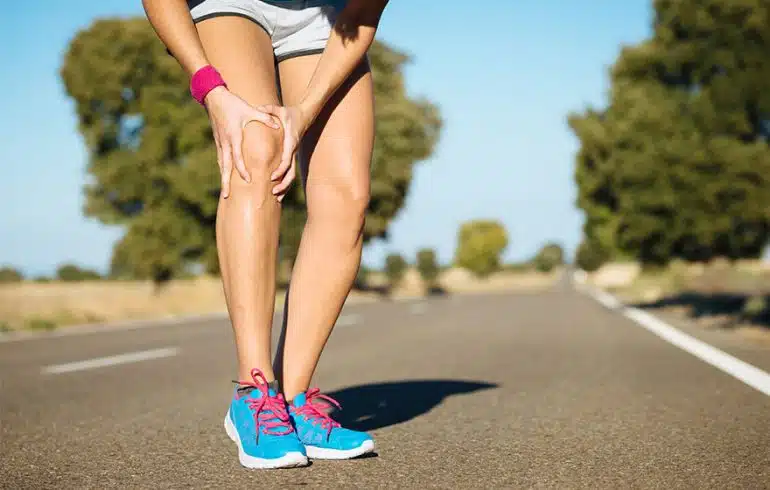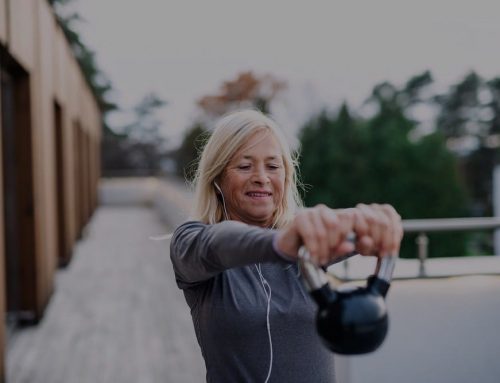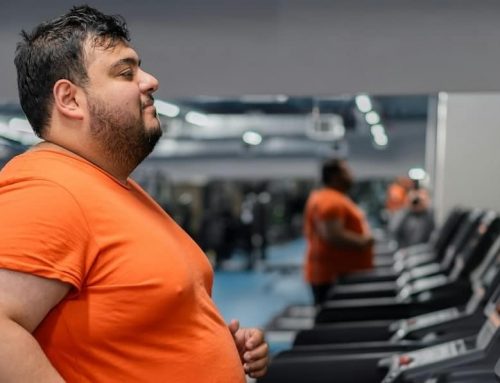
Do you want to join a weight loss or fitness camp but are worried about your knee injury or knee pain? If you have a knee injury or knee pain working out may be the last thing you want to do, however exercising could be the best thing you can do for helping you knees. The important thing to remember is to do the right kinds of exercises for your knee so you don’t cause more harm than good. Pounding your knees with high-impact exercise or overdoing it could make your knee pain worse. Make sure to choose a fitness camp that can modify your program to avoid causing more harm to your knees.
Cardiovascular exercise is important for general health and also assists in healing injuries by providing freshly oxygenated blood cells to the area. Many exercises that get your heart rate up, such as biking, walking, and using an elliptical trainer, may be possible with a knee injury. Also, using exercise machines that only involve your arms are a good choice if you suffer from knee pain. Don’t participate in high-impact activities. Basketball, tennis, racquetball, squash, soccer, and football are hard on the knees because they involve sudden starts, stops, and turns, as well as jumping (and landing). Avoid any type of exercise that involves jumping if you have knee pain. Here are a few tips to get moving while working through your knee pain or knee injury:
Exercises To Avoid if you have a Knee Injury
Your trainer will probably agree with this one, mostly because these three exercises are often done improperly. A few of the following exercises would be avoided if you have chronic knee problems:
- Lunges
- Deep squats
- Hurdler’s stretches
Quick Tips:
Do strengthen muscles. Like a natural knee brace, stronger muscles will help compensate for weak or injured tendons, ligaments, and joints. The quadriceps and hamstrings are the two main muscle groups that support the knee. Do straight leg raises to strengthen the quadriceps and walk backward to help strengthen the hamstrings.
Don’t overdo it. When muscles are fatigued, they can’t absorb as much shock, says Stuchin, which places extra stress on the knees. Start your exercise program slowly and make sure to switch up your exercises every day to help avoid overuse injuries like tendinitis.
Do warm up and stretch. Stretch, stretch, stretch! Warm, flexible muscles aren’t injured as easily. Take a few minutes to stretch your legs before working out. Then start with five minutes of slow cardio before getting into the pool, or pedaling on the stationary bike. This will also get your heart rate and breathing revved up slowly.
Do Ice and Recover After Exercising: After exercising take a rest with a bag of ice on your injured knee, this will help with recovering quickly.
Do not avoid talking to your doctor and fitness professionals: Be open and honest about your injury and knee pain, the more you can can learn, the better. There may be some things you haven’t discovered yet that a professional may be able to help you with.
Best Exercises For Knee Pain
Upper Body Cardio & Strength Training: If your leg is immobilized or unable to bear weight, an arm ergometer is an excellent substitute for bicycling. The arm ergometer is a machine that allows you to use your arms in place of your legs to push the pedals of a bicycle. Another option is trying an upper body circuit training program, using high repetitions and low loads, and short rest breaks between exercises to get your heart pumping.
Elliptical Machine: A great low impact cardio workout without putting stress on your knees, aim for 20 minutes, start with a 5 minute warm up and cool down. Keep your incline low to avoid knee strain.
Side-Lying Leg Lifts: Lie on your left side, legs straight and together, with your left arm supporting your head. Keeping your right foot flexed and your body straight, slowly lift your right leg to about shoulder height, then slowly lower. Switch legs after you’ve done at least 20 reps.
Take a Walk: Going for a good old-fashioned walk has numerous health benefits and is a classic form of low-impact cardio, aim for 30-40 minutes to get your heart rate up and if able, pick up the pace after you get warmed up.
Hamstring Stretch: Lie on your back with your left leg flat on the floor. Loop a towel or rope around your right foot and pull your leg as far as comfortable toward your chest, while keeping a slight bend at the knee. Keep your back pressed to the floor throughout the stretch. Hold for 10 to 30 seconds and then release. Repeat 3 or 4 times with each leg. Do this stretch 5 or 6 times a week.
Ride a Bike: Some knee injuries, as well as osteoarthritis, may improve with bicycling. In addition to providing cardiovascular and healing benefits, cycling improves your knee flexibility and strength. Stick to a low incline or a flat terrain and raise the seat level slightly to decrease the pressure on your kneecap. Cycling will build your endurance and, depending on how fast you go, will burn between 250-500 calories in 30 minutes. If you are cycling indoors, using the traditional stationary bike instead of the sitting stationary bike will burn more calories, as sitting upright engages more muscles.
Hop in the Pool: Swimming is one of the best exercises for people with bad knees. It’s low impact and versatile, and it burns calories quickly. Proper form is crucial, especially while kicking. Techniques that put stress on the knees (e.g., the frog kick) should be avoided. Aim for at least 30 minutes of pool time to get your hear rate up.
Step-Ups: Standing in front of a staircase, place one foot flat on the bottom step. (You also can use a step bench.) Make sure your entire foot is on the step and your knee is directly above your ankle. Putting your weight on the heel of your elevated foot, step onto the foot, lift the opposite foot and tap the step and the floor. Switch feet when you’ve completed at least 12 reps.
Partial Squats: Stand about 10-12 inches away from the front of a chair or bench with your feet about hip-width apart and your toes facing forward. Bending at the hips, slowly lower yourself halfway down to the chair. Keep your abs tight, and check that your knees stay behind your toes. Try at least 20 before taking a break.







